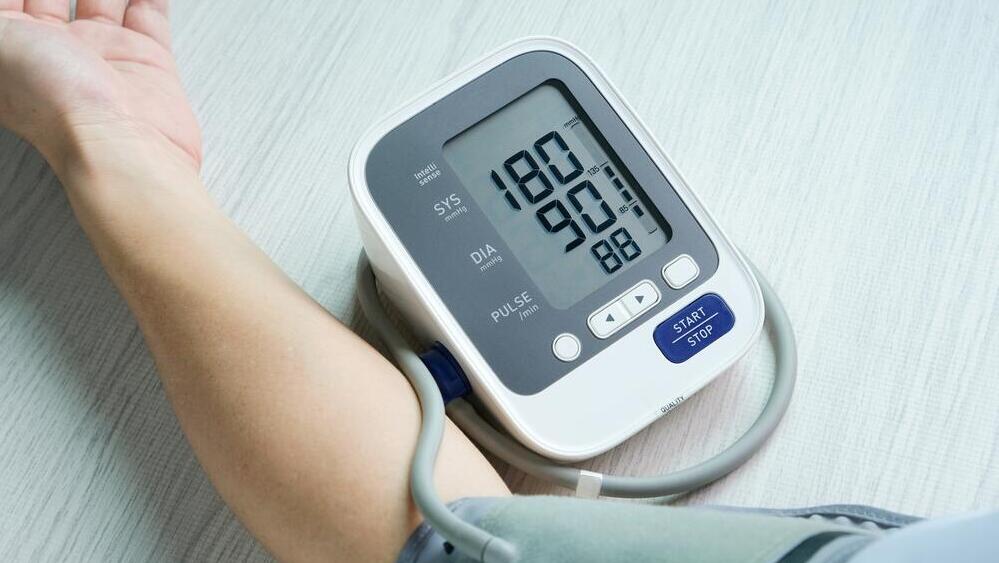Getting your Trinity Audio player ready...
A new study revealed that just five minutes of vigorous exercise daily may help reduce blood pressure. The study’s findings were published in the medical journal Circulation last week. Provided further insight into how physical activity affects high blood pressure — a condition responsible for approximately 12.8% of global mortality each year according to recent World Health Organization (WHO) data.
“Hypertension is a condition in which the blood pressure in the arteries is higher than the recommended range,” explained Dr. Sharon Tsuk, head of the School of Physical Education, the Exercise Physiology Lab and the Cardiac Rehabilitation Exercise Program at the Levinsky-Wingate Academic Center.
“Blood pressure is measured in two values: systolic blood pressure, the higher value, indicating pressure during heart contraction and diastolic blood pressure, the lower value, indicating pressure when the heart rests between beats. Normal blood pressure is considered to be at least 120/80 mmHg; higher values may suggest hypertension, especially if they exceed 140/90 mmHg.”
According to Dr. Tsuk, a temporary rise in blood pressure in a single reading doesn’t necessarily indicate illness, so multiple readings are needed to diagnose chronic hypertension. However, it shouldn’t be taken lightly as it is a significant health risk.
“Hypertension is also known as the ‘silent killer’ because it often lacks clear symptoms. In this condition, the heart struggles to pump blood through the arteries, needing it to work harder. Over time, this increased effort can weaken the heart muscle and impair its function, placing stress on artery walls and heart function.
“This may lead to serious health complications such as heart attack, stroke, heart failure and damage to the kidneys and eyes. The condition’s main factors include genetics, aging, a high-salt diet, smoking, diabetes, stress, lack of physical activity and obesity.”
Time to start moving
The study analyzed data from six studies, examining the effects of average daily activities (including sitting, standing, slow and brisk walking and activities like running and cycling) on blood pressure.
The study included 14,761 participants with an average age of 54. Data was collected using an accelerometer attached to the thigh and blood pressure measurements. Findings showed that participants spent an average of about 7 hours and 8 minutes sleeping, around 10 hours and 42 minutes sitting, about 3 hours and 12 minutes standing, 1 hour and 36 minutes in slow walking and 1 hour and 6 minutes in brisk walking.
Interestingly, only about 16 minutes on average were dedicated to vigorous physical activity like running or cycling.
However, the study found that each additional five minutes of physical activity was linked to a reduction of 0.68 mmHg in systolic blood pressure and 0.54 mmHg in diastolic blood pressure. In contrast, prolonged sitting time was associated with an increase in blood pressure.
The study also found that achieving a clinically significant improvement in blood pressure requires an additional 20–27 minutes of physical activity per day to reduce systolic blood pressure and 10–15 minutes to reduce diastolic blood pressure.
“Engaging in regular physical activity encourages the release of nitric oxide, which dilates the arteries and helps lower blood pressure,” Dr. Tsuk explained. “Exercise also increases cardiac output, which also improves arterial flexibility over time.”
“During exercise, hormones and neurotransmitters (brain-active chemicals) are released, which activate the body's stress response systems. Therefore, even a short time exercising can lead to quick improvements in blood pressure and overall health,” she added.
“The study’s findings highlight the importance of consistent physical activity in maintaining normal blood pressure. Adding a small amount of exercise during the day can help lower blood pressure and improve overall health. However, prolonged sitting was found to be associated with increased blood pressure, so it’s recommended to break up sitting time throughout the day.”
She also noted, however, that it's recommended to gradually increase the duration and intensity of activity to achieve optimal results. "Beyond its impact on blood pressure, it's essential to remember that physical activity improves heart function, reduces the risk of type 2 diabetes, aids in weight loss, reduces stress and releases hormones that boost mood and overall well-being."
According to Dr. Zhanna Olchov, a family and sports medicine specialist at Maccabi Health Services, the positive takeaway from this study is that anyone can take steps to lower their blood pressure and it doesn’t require special resources.
"As a family physician who meets patients daily, I aim to explain the importance of aerobic activity for their health. I explain the consequences of a sedentary lifestyle and share personal examples to set a positive example,” she said.
“Sometimes, I even give them a 'prescription' for physical activity — such as 10 minutes of walking three times a week — and follow up to ensure they keep it up. After two weeks, I increase the 'dose' to 20 minutes of walking, and so on," she explained.
"One of the best ways to encourage patients to exercise consistently is to find an activity they enjoy, whether it's dancing, competitive sports like tennis or basketball, or simply a daily walk with their dog.
“Anything counts as long as it gets the body moving and the heart rate up. However, it’s also important to note that alongside the value of aerobic activity, I make sure to emphasize to my patients the importance of strength training. These boost metabolism, support posture, lower blood sugar levels and strengthen muscles."
Get the Ynetnews app on your smartphone:
First published: 01:03, 11.14.24






